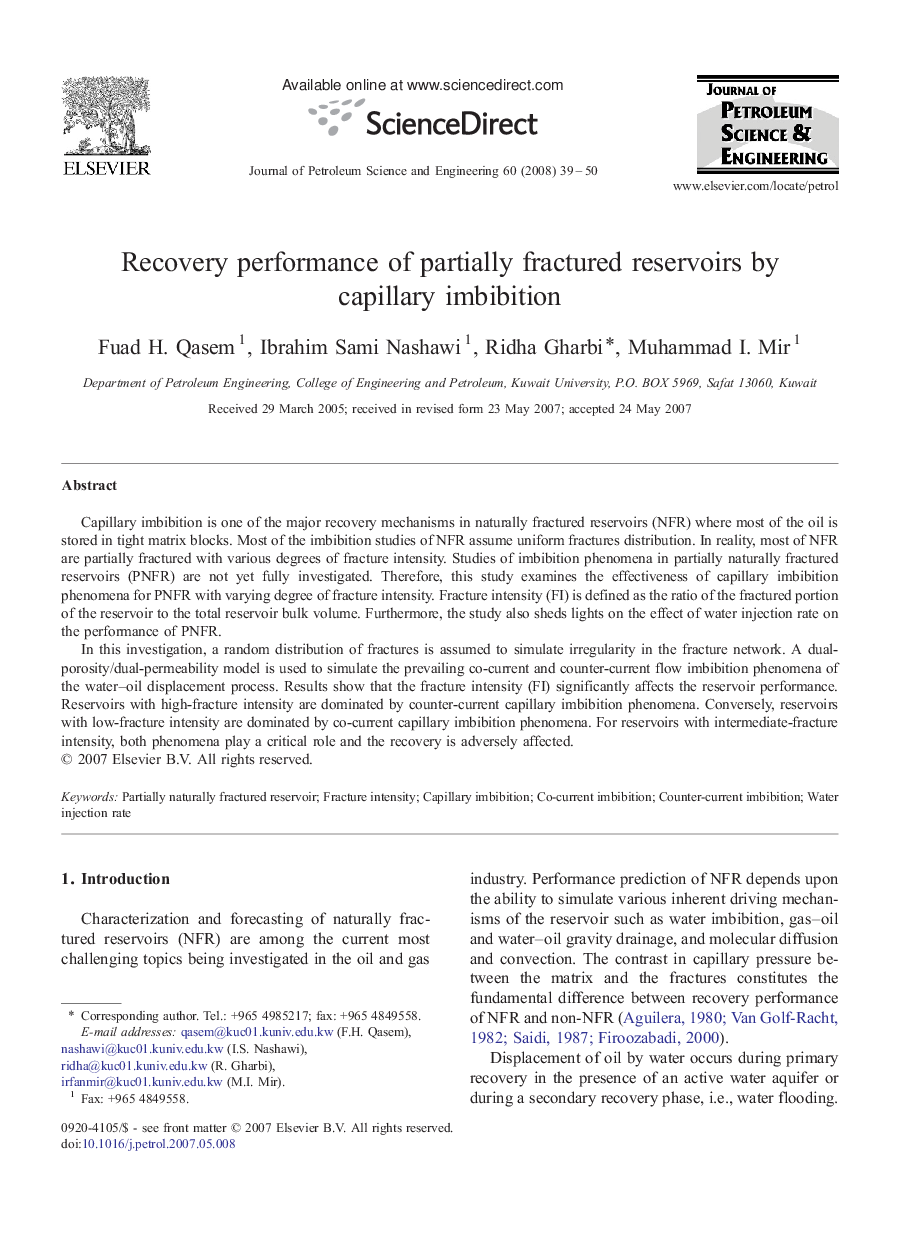| کد مقاله | کد نشریه | سال انتشار | مقاله انگلیسی | نسخه تمام متن |
|---|---|---|---|---|
| 1756381 | 1018949 | 2008 | 12 صفحه PDF | دانلود رایگان |

Capillary imbibition is one of the major recovery mechanisms in naturally fractured reservoirs (NFR) where most of the oil is stored in tight matrix blocks. Most of the imbibition studies of NFR assume uniform fractures distribution. In reality, most of NFR are partially fractured with various degrees of fracture intensity. Studies of imbibition phenomena in partially naturally fractured reservoirs (PNFR) are not yet fully investigated. Therefore, this study examines the effectiveness of capillary imbibition phenomena for PNFR with varying degree of fracture intensity. Fracture intensity (FI) is defined as the ratio of the fractured portion of the reservoir to the total reservoir bulk volume. Furthermore, the study also sheds lights on the effect of water injection rate on the performance of PNFR.In this investigation, a random distribution of fractures is assumed to simulate irregularity in the fracture network. A dual-porosity/dual-permeability model is used to simulate the prevailing co-current and counter-current flow imbibition phenomena of the water–oil displacement process. Results show that the fracture intensity (FI) significantly affects the reservoir performance. Reservoirs with high-fracture intensity are dominated by counter-current capillary imbibition phenomena. Conversely, reservoirs with low-fracture intensity are dominated by co-current capillary imbibition phenomena. For reservoirs with intermediate-fracture intensity, both phenomena play a critical role and the recovery is adversely affected.
Journal: Journal of Petroleum Science and Engineering - Volume 60, Issue 1, January 2008, Pages 39–50